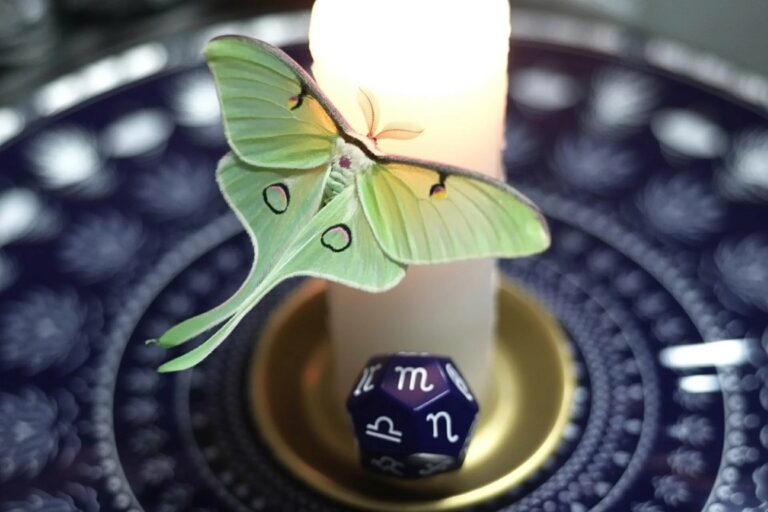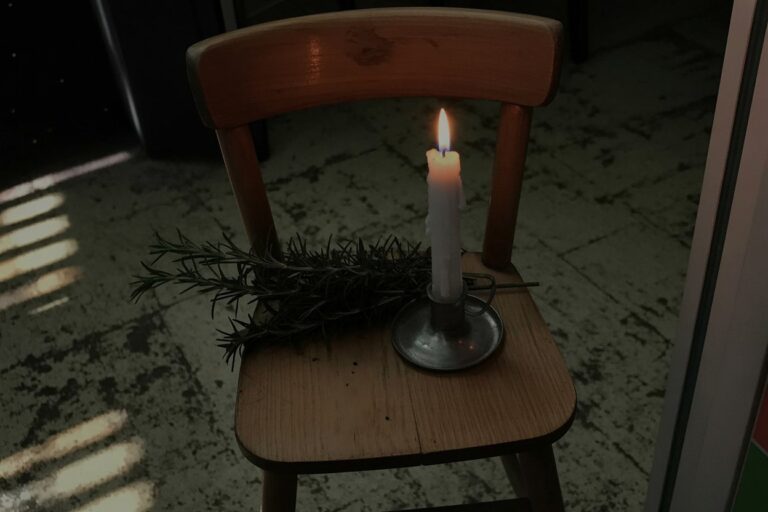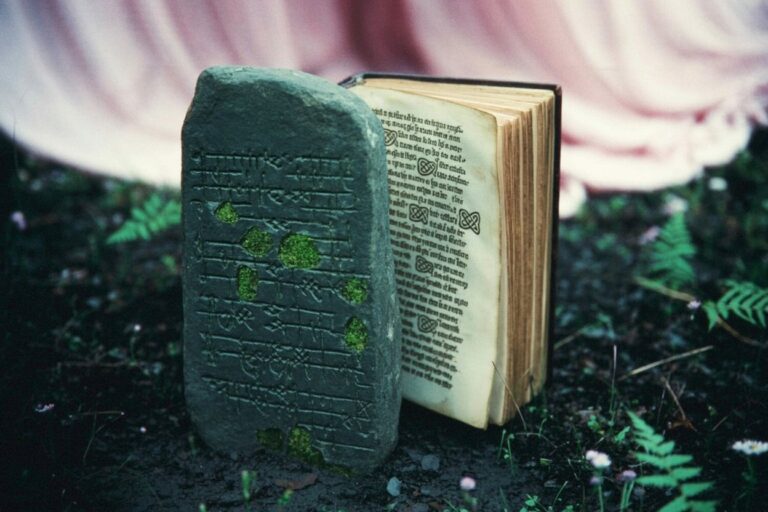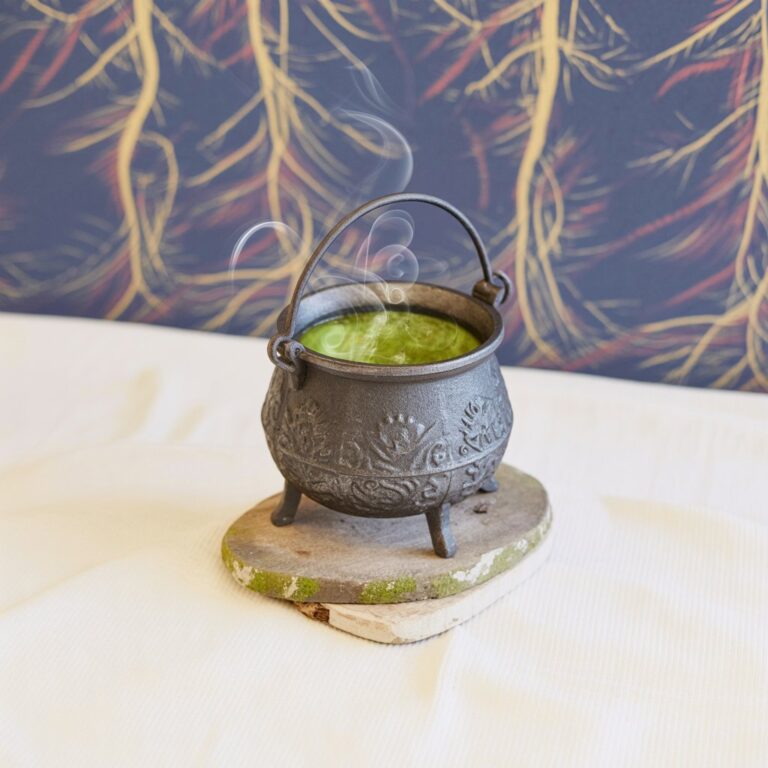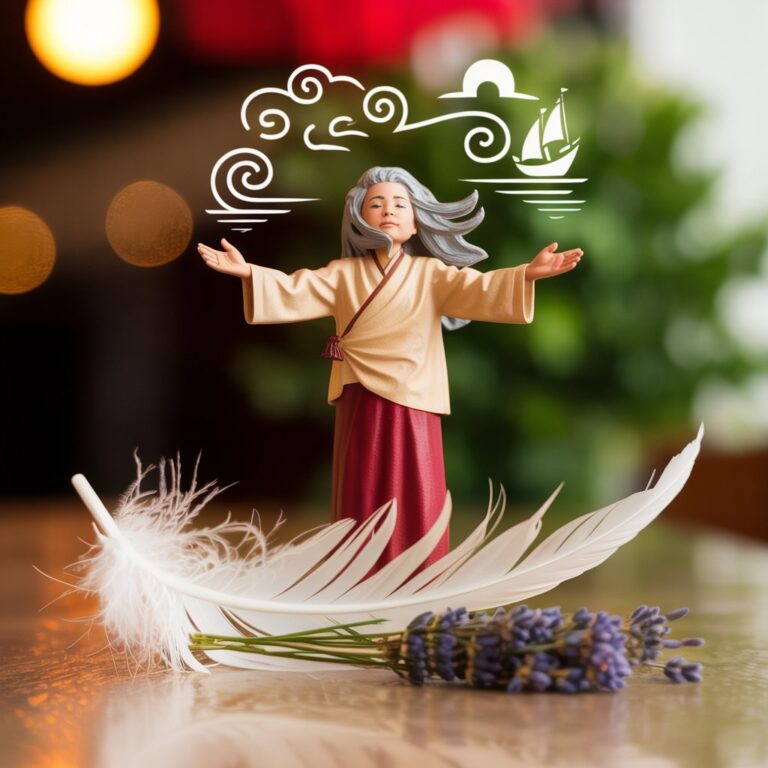Death in Witchcraft: Beliefs, Rituals, and Working with Death Magic
Please note that posts on this site may contain affiliate links
Death isn’t the enemy in witchcraft, but a teacher, a doorway, and sometimes, a powerful ally in magic.
While mainstream culture often treats death as something to fear or avoid discussing, witches and pagans approach it differently. We see death as part of the eternal cycle, a sacred transition that deserves reverence rather than denial. Whether you’re curious about what happens after death in pagan beliefs, wondering about death magic, or seeking comfort in ancient wisdom about loss, this guide covers how death weaves through every aspect of witchcraft.
From working with death deities like Hades and Hekate to understanding ancestor communication, death magic ethics, and pagan funeral traditions, let’s explore why death holds such profound meaning in our spiritual paths.
- What Death Means in Witchcraft and Paganism
- Death Deities and Divine Guides
- The Witch's Afterlife: Where Souls Journey
- Death Magic and Necromantic Practices
- Ancestor Work and Spirit Communication
- Pagan Death Rituals and Funeral Rites
- Grief, Mourning, and Shadow Work
- Ethics of Death Magic
- Walking the Path Between Worlds
What Death Means in Witchcraft and Paganism
In witchcraft, death represents transformation rather than ending. Think of it like the seed that must die for the plant to grow, or winter’s dormancy that feeds spring’s abundance. Death is woven into the natural cycles we honor: the waning moon, the dark season, the composting earth that nourishes new life.
This perspective shapes everything from our seasonal celebrations to our approach to personal growth. When witches talk about “dying to be reborn,” we’re often referring to shadow work, the practice of releasing old patterns, trauma, or limiting beliefs to make space for growth. Understanding shadow work through ritual and reflection can be as transformative as any major life change.
Many witches also work with death symbolically in magic. Black candles for banishing, dried herbs for release work, or protective circles that honor all elements including spirit often incorporate death’s energy of completion and clearing.
The philosophical approach varies between traditions, but most share common threads: death as natural, death as sacred, and death as connected to rebirth. Some witches lean heavily into ancestor veneration and spirit work, while others focus more on death’s symbolic power in personal transformation.
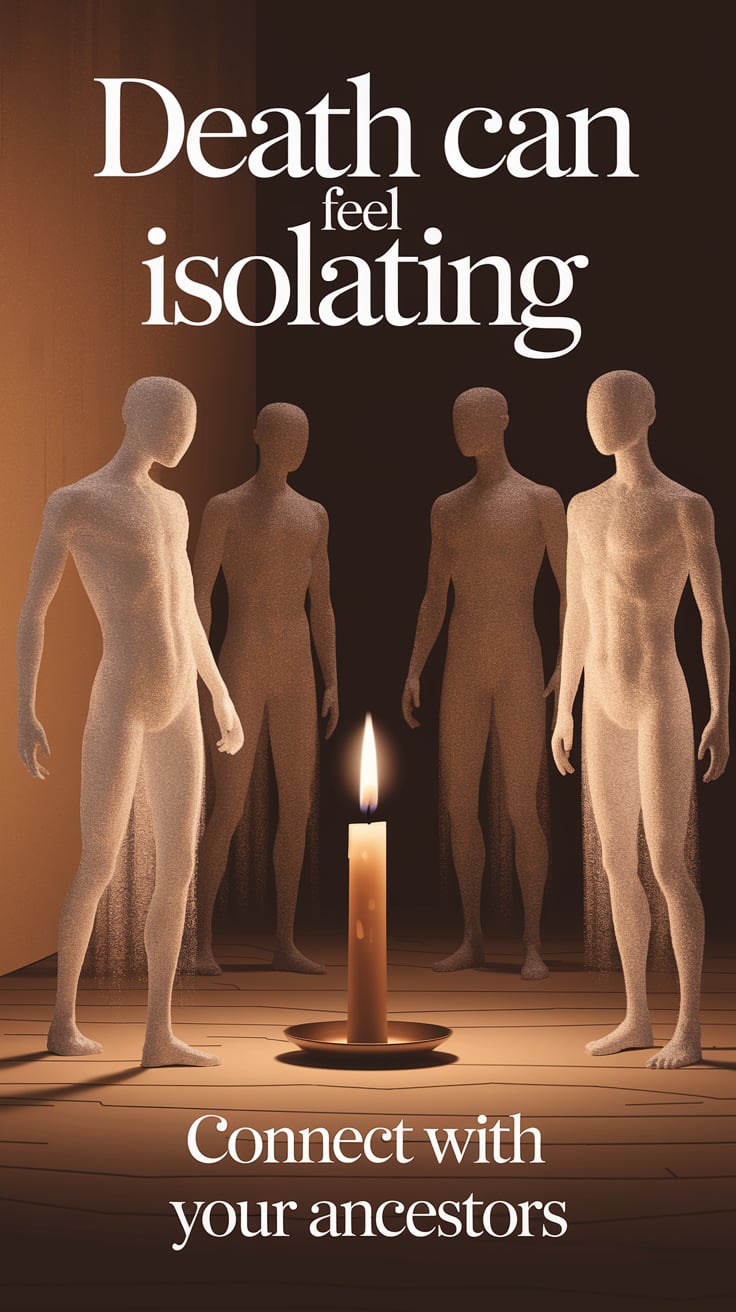
Death Deities and Divine Guides
Working with death deities offers witches guidance through life’s most profound transitions. These aren’t “evil” gods! They’re wise, ancient forces who understand both endings and beginnings.
Hades rules the underworld in Greek tradition, governing both the dead and the earth’s hidden wealth. Many witches find him surprisingly gentle—a protector of souls rather than a punisher. Connecting with Hades through prayer can help with grief work, setting boundaries, or understanding your own relationship with mortality. Traditional offerings to Hades include dark wine, pomegranates, and coins as simple gestures that honor his role as guide and guardian.
If you’re feeling drawn to underworld deities, learning the signs that Hades is reaching out can help you understand whether this path calls to you.
Hekate stands at crossroads, holding keys to the mysteries of life, death, and rebirth. She’s particularly powerful for witches navigating major life transitions or seeking wisdom from the liminal spaces. Working with Hekate during summer months shows how her death-and-rebirth energy flows through all seasons, not just the dark half of the year. Hekate’s spiritual benefits include enhanced intuition, protection during vulnerable times, and guidance through personal transformations.
Persephone embodies the journey between worlds, the space between the living and the dead, the surface and the depths. Connecting with Persephone’s transformative power can support you through your own seasonal changes and personal underworld journeys. Working with Persephone through ritual and meditation offers pathways for healing trauma, embracing change, and finding strength in vulnerability.
Marzanna, the Slavic goddess of death and winter, represents the necessary endings that make new beginnings possible. Understanding Marzanna’s role in seasonal cycles can deepen your appreciation for death’s place in natural rhythms.
Many traditions also honor psychopomps: deities who guide souls between worlds. These divine escorts help both the living and the dead navigate transitions safely.
When choosing which deity to work with, consider your specific needs: grief support, shadow work, protection during vulnerable times, or guidance through major life changes.
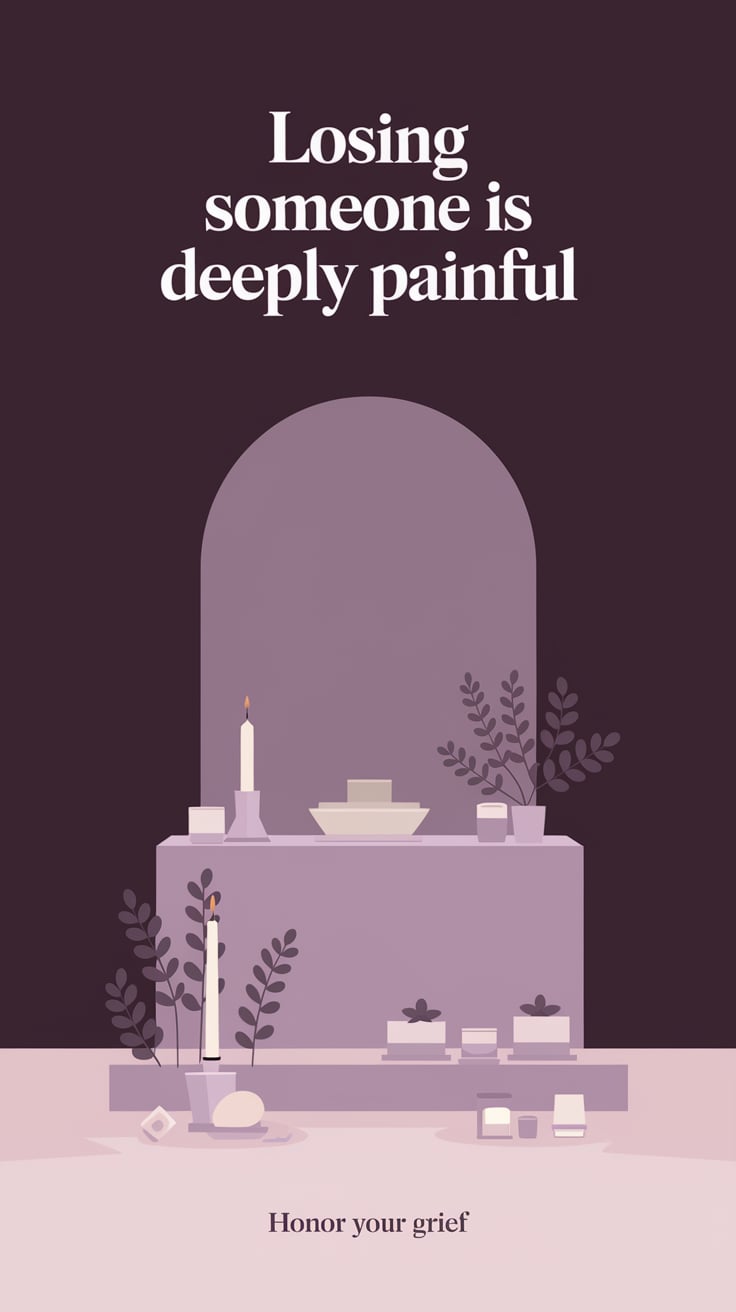
The Witch’s Afterlife: Where Souls Journey
Pagan afterlife beliefs vary widely, but most share a sense of continuation rather than judgment. Unlike heaven-or-hell systems, pagan cosmologies often describe the afterlife as a place of rest, reflection, and eventual renewal.
The Summerlands appear in many modern pagan traditions: a realm of peace where souls reunite with loved ones and reflect on their earthly experiences. Some see this as preparation for reincarnation, while others view it as a permanent resting place. The imagery often includes eternal summer, abundant gardens, and the presence of all who’ve gone before.
Celtic traditions speak of the Otherworld, a parallel realm accessible through thin places in the landscape. Here, time moves differently, and the dead continue their existence in a land of eternal youth and plenty. This isn’t a reward for good behavior but a natural continuation of the soul’s journey.
Norse cosmology offers multiple afterlife destinations. While Valhalla gets the most attention, most souls journey to Hel (the realm, not the Christian concept), ruled by the goddess Hel. This isn’t punishment, it’s just where most people go to rest with their ancestors.
Many contemporary witches blend these concepts or develop personal beliefs based on their experiences with spirit communication and ancestor work. Some report contact with deceased loved ones through dreams, meditation, or divination, suggesting consciousness continues in some form.
The key difference from mainstream religious views? Pagan afterlife concepts rarely involve eternal punishment. Death is seen as a natural transition, not a moral test. This perspective often brings comfort to those grieving or facing their own mortality.
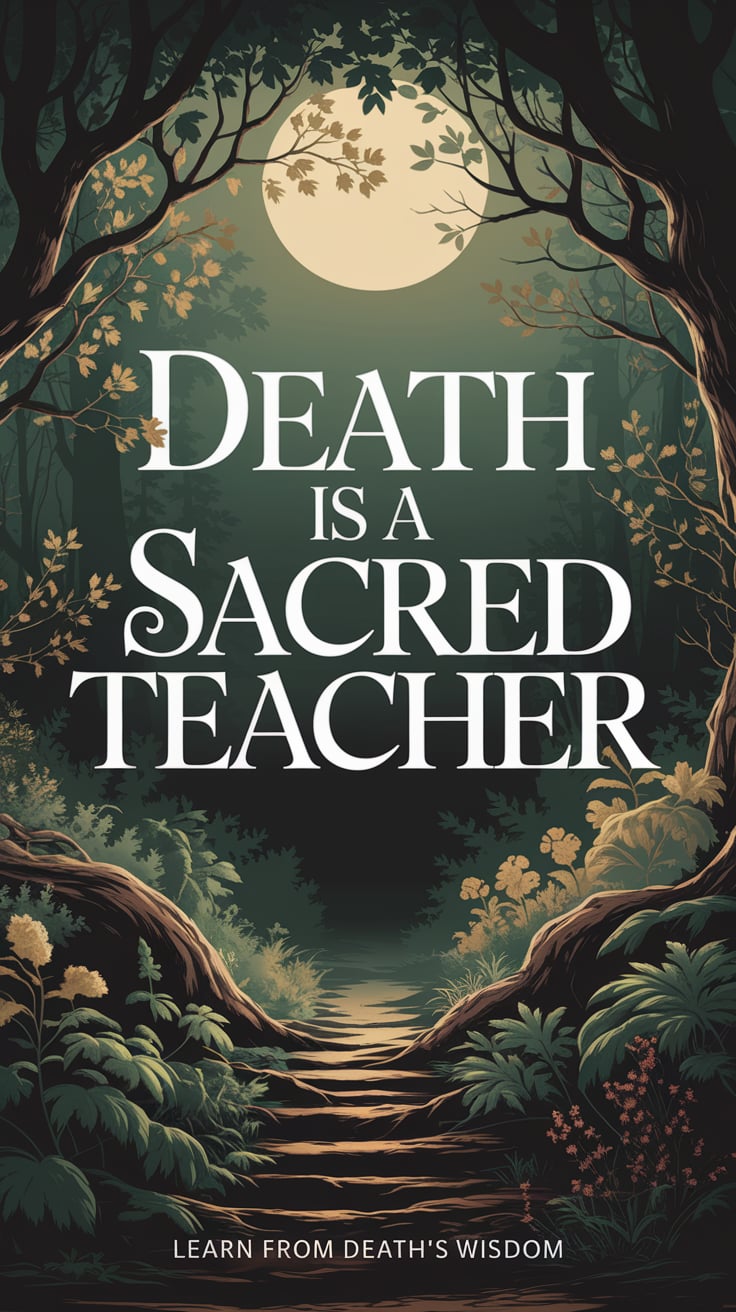
Death Magic and Necromantic Practices
Death magic in witchcraft isn’t about raising zombies or causing harm—it’s about working with death’s natural energies for healing, protection, and transformation. This includes everything from banishing spells to ancestor communication.
Banishing and Release Work uses death’s energy of endings to clear negativity from your life. Simple candle spells for beginners often incorporate black candles and herbs associated with death and clearing. The goal isn’t destruction but transformation, or allowing what no longer serves you to die so something better can grow.
Spirit Communication forms a major part of death magic. This might involve calling specific spirits for guidance, creating spell jars that enhance psychic communication, or using sensory deprivation techniques to reach altered states of consciousness.
Cleansing and Protection often draws on death symbolism. Cleansing mirrors of negative spirits or creating protective herb blends may incorporate plants traditionally associated with death and the underworld.
Ethical Considerations are crucial in death magic. The question “Do witchcraft spells kill?” comes up often, and the answer involves understanding both magical ethics and practical limitations. Most experienced practitioners focus on protection, healing, and positive transformation rather than harmful magic.
Symbolic Death Work includes rituals where you symbolically “die” to old patterns or identities. This might involve detoxification spells for mind and body or working with deities like Persephone during times of personal transformation.
Understanding the deeper philosophy of death in witchcraft can help you approach these practices with appropriate reverence and safety.
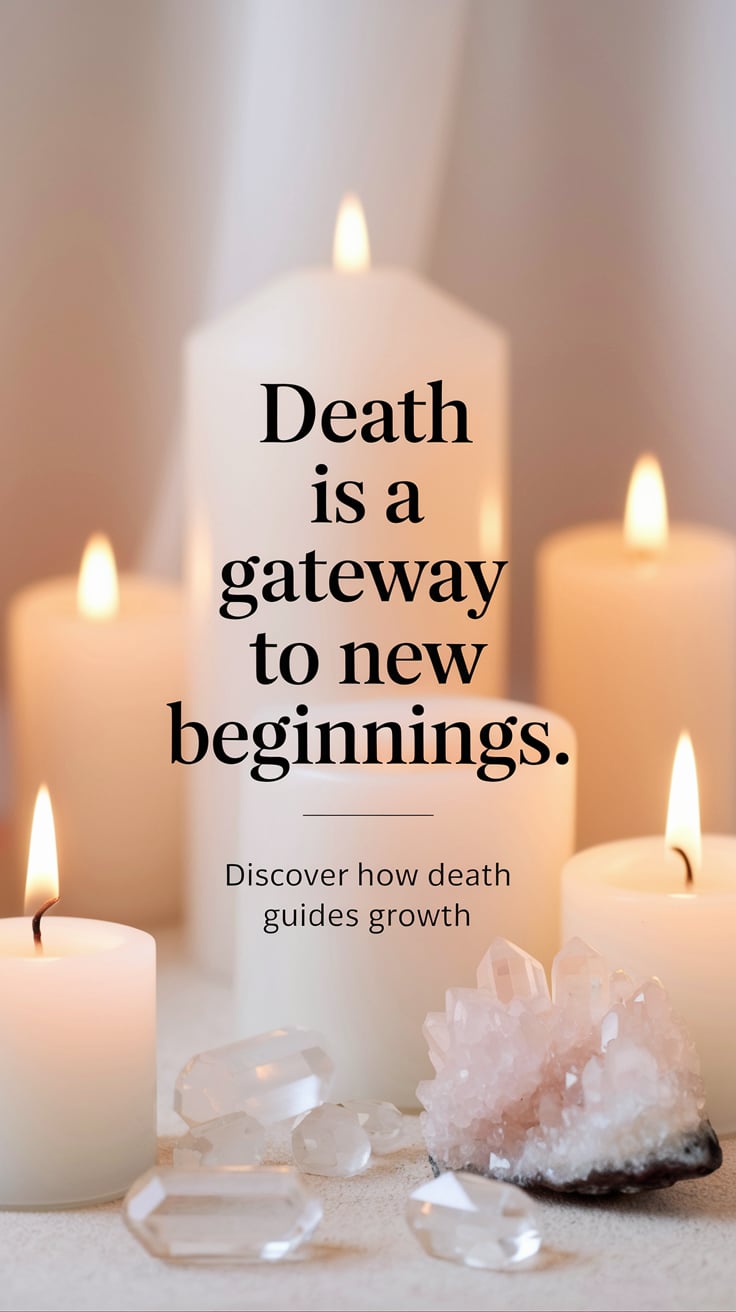
Ancestor Work and Spirit Communication
Connecting with ancestors forms the heart of many witches’ spiritual practice. This isn’t just about biological family, it includes spiritual ancestors, cultural lineages, and the wise dead who offer guidance across the veil.
Building Ancestor Relationships often starts simple. Creating safe connections with the dead during Samhain provides a seasonal framework for this work. You might begin with photographs, heirloom objects, or traditional offerings that honor the deceased.
Communication Methods vary widely between practitioners. Some use spirit journaling techniques adapted for ancestor work, while others prefer meditation, divination, or dream work. Working with lunar cycles for ancestor magic can enhance your connection, as the waning moon traditionally supports communication with the dead.
Protective Practices matter when opening to spirit communication. Grounding rituals help you stay centered, while understanding different types of spiritual guides can help you discern between ancestors, spirit guides, and other entities.
Seasonal Connections peak during certain times of year. Traditional Samhain celebrations honor the thinning veil between worlds, but ancestor work can happen year-round. Even secular approaches to Samhain can include ancestor remembrance without requiring specific religious beliefs.
Signs and Symbols often indicate ancestral presence. Moth symbolism in dreams frequently connects to messages from the dead, while other signs might include specific scents, temperature changes, or synchronicities.
For those new to this work, Samhain printables and worksheets offer structured approaches to ancestor connection and reflection.
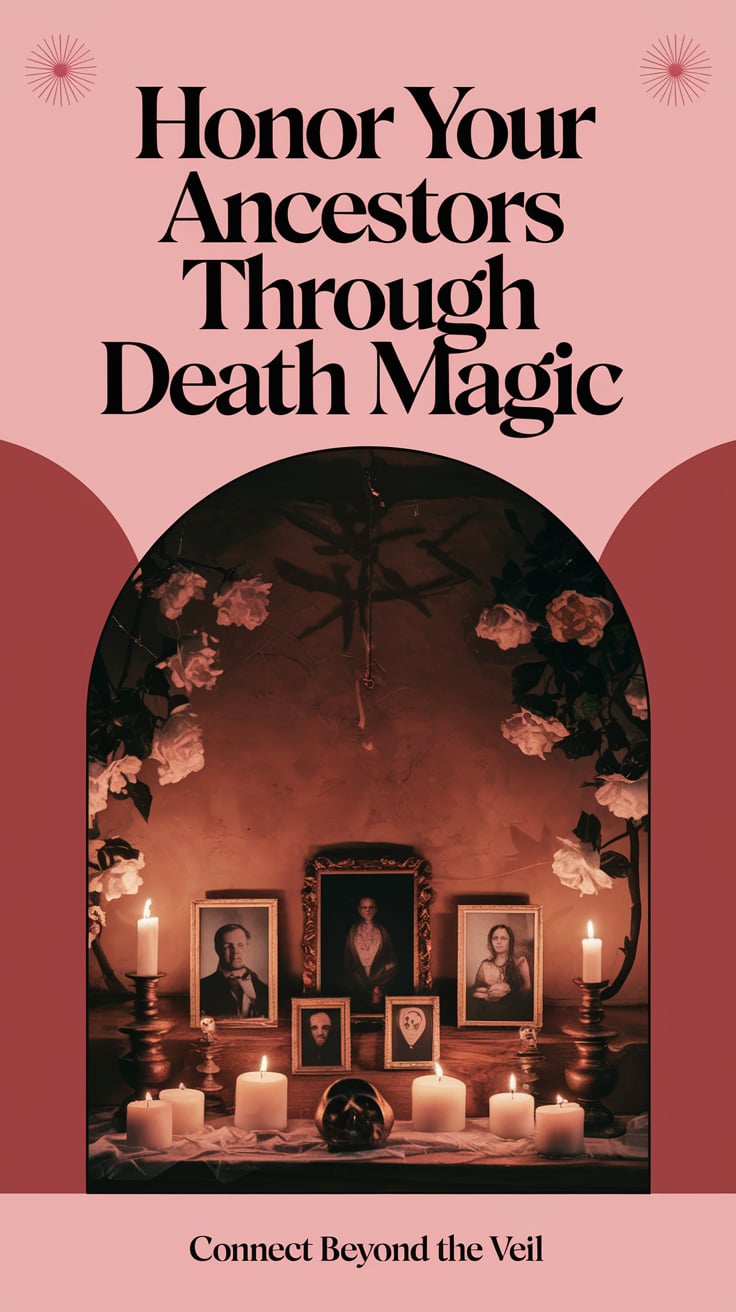
Pagan Death Rituals and Funeral Rites
Pagan funeral traditions focus on honoring the deceased’s journey while supporting the living through grief. These ceremonies often emphasize celebration of life, connection to nature, and the continuity of the soul’s journey.
Modern Pagan Funerals typically blend ancient symbolism with contemporary needs. Understanding pagan funeral customs shows how different traditions approach death rites, from simple earth burials to elaborate ceremonies honoring specific deities.
Natural Burial Practices appeal to many pagans who see death as a return to the earth. Comprehensive guides to pagan funeral options explain how green burials, cremation, and other choices can reflect pagan values of environmental connection and natural cycles.
Ritual Elements often include symbolic gestures that honor both the deceased and the natural world. Traditional pagan funeral practices may involve releasing butterflies, planting trees, or creating memorial gardens that continue growing in the person’s memory.
Norse Pagan Traditions offer specific approaches to death and funeral rites. Understanding Norse pagan burial customs provides insight into how ancient practices adapt to modern circumstances while maintaining spiritual authenticity.
Creating Sacred Space for grief and remembrance doesn’t require elaborate ceremonies. Simple pagan death rites can be performed by family members or close friends, focusing on love, memory, and the soul’s continued journey.
Funeral Poetry and Readings help express pagan perspectives on death and transition. Traditional pagan funeral poems offer language for grief that honors both sorrow and hope.
Etiquette and Planning for pagan funerals requires understanding both spiritual and practical considerations. Guidance on modern pagan funeral etiquette helps families navigate these important decisions with grace and authenticity.
Many pagans also appreciate comprehensive resources on death, dying, and bereavement from a pagan perspective, which address both the spiritual and emotional aspects of loss.
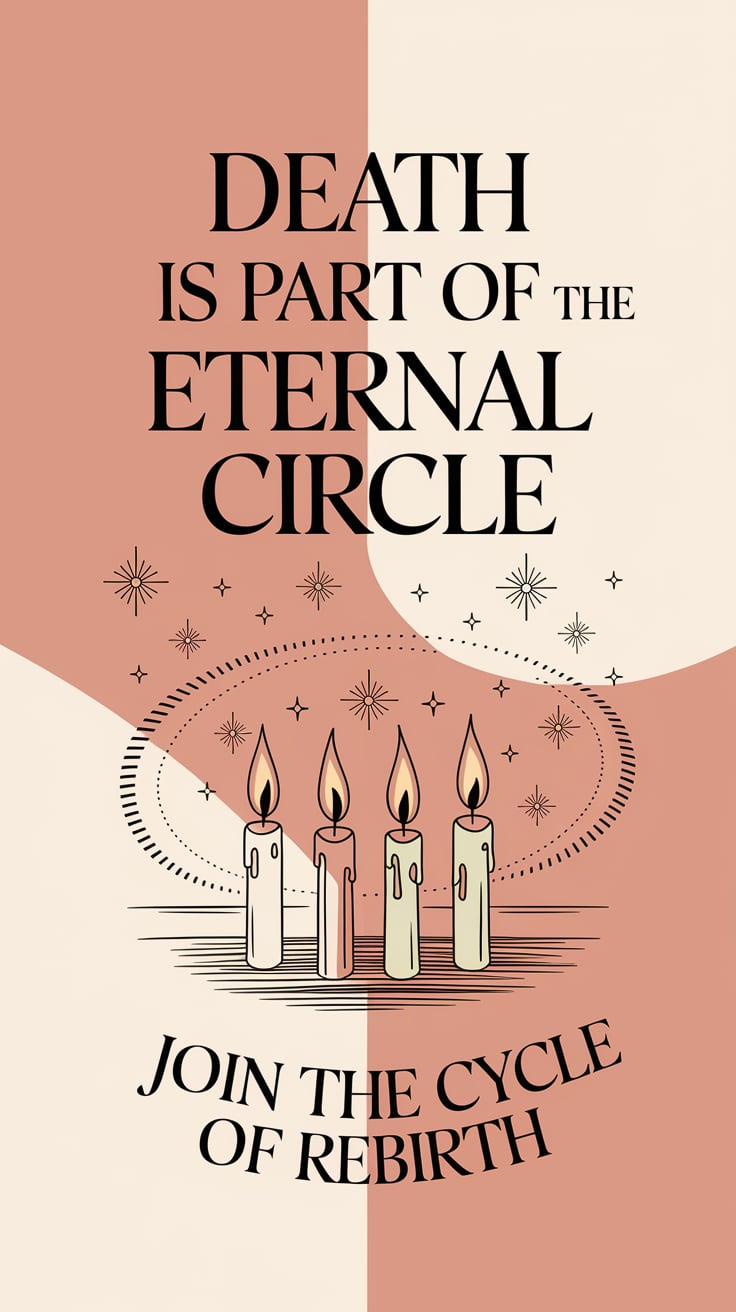
Grief, Mourning, and Shadow Work
Grief in witchcraft isn’t something to “get over”, it’s a sacred process that deserves honor, time, and ritual support. Many witches find that traditional mourning practices don’t match their spiritual needs, leading them to create personalized approaches to loss and healing.
Understanding Grief as Sacred means recognizing that sorrow, anger, numbness, and other difficult emotions serve important purposes. Working through depression and difficult emotions with magical support acknowledges that healing isn’t linear and that spiritual practices can support mental health without replacing professional care.
Shadow Work for Grief involves facing the parts of loss that feel too painful or complicated to address directly. This might include guilt over unfinished conversations, anger at the deceased, or fear of your own mortality. Simple witchcraft practices for busy lives can provide accessible tools for processing grief without overwhelming yourself.
Ritual Support for Mourning helps externalize internal processes. You might create cleansing rituals with Hekate’s guidance to release guilt or anger, or work with lunar cycles for emotional healing during particularly difficult periods.
Seasonal Grief Work recognizes that loss often intensifies during certain times of year. Working with Persephone during winter solstice can provide comfort during the darkest months, while questions for Persephone meditation might help you process your own underworld journey through grief.
Community and Isolation both play roles in healthy mourning. Sometimes you need solitude for deep feeling; other times, connection helps prevent grief from becoming destructive. Teaching children about death and loss can also help adults process their own feelings while supporting the next generation’s understanding.
Honoring Continuing Bonds with the deceased often brings more comfort than trying to “let go” completely. This might involve ongoing ancestor communication practices or simply maintaining small daily rituals that keep their memory alive.
Professional Support remains important alongside spiritual practices. Resources on pagan approaches to death and bereavement can complement therapy, support groups, or medical care for complicated grief.

Ethics of Death Magic
Working with death’s energy requires careful consideration of ethics, safety, and respect for both the living and the dead. These practices carry real power and deserve thoughtful approach.
Consent and Boundaries apply to spirit work just as they do to relationships with living people. Not all spirits want contact, and not all times are appropriate for reaching across the veil. Understanding the potential dangers of witchcraft includes recognizing when spiritual practices might harm rather than help.
Cultural Appropriation concerns arise when borrowing death practices from closed traditions. Focus on your own ancestral practices, open traditions, or contemporary approaches rather than adopting sacred rites from cultures that aren’t yours to claim.
Mental Health Considerations matter especially in grief work and spirit communication. If you’re dealing with recent loss, severe depression, or trauma, professional support should complement rather than be replaced by magical practices.
Protective Practices become essential when working with death energy. This includes proper grounding techniques, understanding different types of spiritual guidance, and knowing when to step back from practices that feel overwhelming.
Harm and Healing represent the two edges of death magic. While most practitioners focus on healing, protection, and positive transformation, the potential for harmful magic exists. Comprehensive resources on death magic ethics can help you navigate these complex considerations.
Teaching and Sharing death magic requires special care. What feels healing to you might be harmful to someone in a different stage of grief or with different spiritual needs. Always encourage people to seek appropriate support and never present magical practices as substitutes for medical or mental health care.
Respect for the Dead means approaching spirit work with reverence rather than casual curiosity. The deceased deserve the same consideration you’d give living people, perhaps more, since they can’t advocate for themselves in the same ways.
Understanding death from multiple spiritual perspectives can deepen your appreciation for the complexity and responsibility involved in this work.
Test your knowledge
Walking the Path Between Worlds
Death in witchcraft isn’t about morbid fascination or dramatic ritual—it’s about embracing the full cycle of existence with wisdom, reverence, and practical magic. Whether you’re drawn to ancestor work, shadow healing, or simply want to understand pagan perspectives on mortality, this path offers profound opportunities for growth and connection.
The journey into death magic often begins with personal loss or spiritual curiosity, but it deepens into something much richer: a way of living that honors both endings and beginnings, that finds sacred meaning in natural cycles, and that maintains loving connections across the veil between worlds.
Remember that this work takes time to develop safely and meaningfully. Start with simple practices like lighting candles for the dead, connecting with protective deities, or exploring your own relationship with mortality through reflection and ritual.
Practical guides to living and dying as a pagan can support your journey, while resources on psychopomp work and soul healing offer deeper exploration of death’s transformative power.
The path between worlds isn’t always easy, but it offers something precious: a way of understanding death that brings comfort rather than fear, connection rather than isolation, and wisdom that serves both the living and the dead.

Ignite your fires…
Ignite your magical journey and harness the zodiac’s power with ‘Fire Magic Through The Year: Elemental Magic With The Zodiac‘ for only $6.99—let the stars and fire guide your path to transformation.

